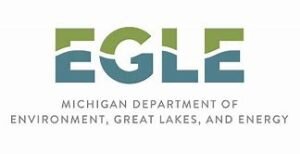
Public Partners
Elected Officials at the National (Federal), State, and Local Levels
U.S. Government
President: Joseph R. Biden, 1600 Pennsylvania Ave., NW Washington, DC 20500
Senators (mail best sent to regional office, not to Washington,D.C.)
Senator Gary Peters, 124 West Allegan Street Suite 1400 Lansing, MI 48933 Phone: (517) 377-1508
Senator Debbie Stabenow, Mid-Michigan Office 221 W. Lake Lansing Road Suite 100 East Lansing, MI 48823 Phone: (517) 203-1760
Member House of Representatives (4th Congressional District) John Moolenaar, 200 E Main St Ste 230, Midland, MI 48640; Phone (989) 631-2552
Michigan State Government:
Governor: Gretchen Whitmer, P.O. Box 30013 Lansing, Michigan 48909. Phone: 517-373-3400 or 517-335-7858
Michigan Senate: Senator Rick Outman, P.O. Box 30036. Lansing, MI 48909-7536. Phone: (517) 373-3760 or email: www.senatorrickoutman.com/contact/
Michigan House of Representatives: Rep. Pat Outman, House Office Building. Lansing, MI 48933; Phone: (517) 373-0834; email: PatOutman@house.mi.gov
Gratiot County Commission (Representing St. Louis):
Jan Bunting, Phone: 989-681-3559; 204 N Main Street St. Louis, MI 48880
St. Louis City:
Mayor Tom Reed, 300 North Mill Street, St. Louis, MI 48880 (989) 681-2137 email: reedertc@yahoo.com
Public (Government) Administrative Agencies
International Joint Commission:
This is the Canada-U.S. Great Lakes agency. The IJC was established in 1909 to oversee the boundary waters (any that cross the boundary – from the Great Lakes to rivers and streams). It has two directors, one each appointed by the U.S. and Canadian government. Much like the Pine River Task Force, it has concern with both the environment itself, but also human health related to water contamination or water use. While it may seem remote, representatives of the IJG have attended meetings with the Task Force. The Great Lakes Office of the IJC is located at 100 Ouellette Ave., 8th Floor, Windsor, Ontario.
United States Government:
Environmental Protection Agency (EPA), is the primary U.S. government environmental agency and is responsible for the three Superfund sites in St. Louis: the Gratiot County Landfill, the Velsicol Burn Pit and the Velsicol Plant Site. However, U.S. EPA has many programs other than Superfund related to environmental contamination and funds much environmentally related health research. Most contact with EPA in Michigan is processed through the Region 5 office in Chicago. For both the Burn Pit and the former Velsicol Plant Site, the Project Manager is Thomas Alcamo, who is based in Chicago but frequently visits the sites in St, Louis. Mr. Alcamo’s email is alcamo.thomas@epa.gov; his phone number is (312) 886-7278.
US EPA maintains website with much current past information and many documents related to their work in St. Louis and at other sites across the nation related to Velsicol. For documents related to the plant site in St. Louis, go to: VELSICOL CHEMICAL CORP. (MICHIGAN) | Superfund Site Profile | Superfund Site Information | US EPA
Center for Disease Control (CDC), is the primary U.S. government agency responsible for monitoring public health risks, including those related to the Superfund project. The Agency for Toxic Substances Disease Registry (ATSDR), a division of the CDC, is funded under the Superfund program to conduct health assessments at sites, including those in St, Louis. There are a number of specialized federal health research agencies with which we also work, collectively called the National Institutes of Health. We have primarily worked with the National Institute of Environmental Health Sciences (NIEHS).
State Agencies
Michigan Department of Environment, Great Lakes and Energy (EGLE) is the state equivalent of the U.S. EPA. Under the Superfund law, after clean-ups are completed, EGLE assumes responsibility for monitoring sites, which may require many years of maintenance before they are fully removed from Superfund.
Michigan Department of Health and Human Services (formerly the Department of Community Health – MDCH) has worked with us on a variety of issues growing from actual or potential exposures to contaminants from sites in the Pine River watershed. An office within MDHHS is funded by the federal ATSDR to work specifically with Superfund health concerns. We also work with DHHS on a variety of issues related to the Michigan PBB Registry, following up persons exposed to PBB and their descendants.
MDHHS recently released this explanation of applying to participate in the PBB Registry:
Michigan Department of Health and Human Services Announcement on PBB 12/2120
Poly-brominated biphenyls (PBBs) in Michigan
Polybrominated biphenyls (PBBs) are man-made chemicals commonly used as a fire retardant in plastic products before they were banned in the United States in 1976. However, since PBBs don’t break down quickly in nature, they have stayed in our environment for decades. PBBs can build up in people who are exposed and remain there for many years, as well.
In the early 1970s, thousands of Michigan residents were exposed to polybrominated biphenyls (PBBs). This happened after a factory in St. Louis, Michigan that made PBBs accidently shipped the chemicals instead of an animal feed supplement to feed mills across the state. This mix-up resulted in many thousands of animals eating PBBs in their feed. The PBBs were passed along to people when they ate meat or eggs or drank milk from these animals. Many of the factory workers were exposed to PBBs through their work, too. It was later discovered that PBBs could also be passed along to babies of exposed mothers while in the womb or through their breast milk.
Since the mix-up in the 1970s, the Michigan Department of Health and Human Services (MDHHS) responded by studying Michigan residents who were directly exposed to PBBs for both short- and long-term health impacts. Over time, these studies on PBBs have continued. During the early 2000s, active studies about exposure to PBBs shifted to Emory University. Emory University developed its own study on people exposed to PBBs based on the work done by MDHHS.
How to Join Emory University’s PBB study
If you were part of the Michigan Long-Term PBB study run by MDHHS and wish to participate in Emory University’s PBB study, you must go to the Emory University website to fill out a Transfer Your PBB Records form. By doing this, you give MDHHS permission to transfer your records to Emory University. Additional information about Emory’s PBB study can be found on their study website.
To request the records from MDHHS of a deceased immediate family member’s participation in the Michigan PBB Long-Term Study, please fill out the MDHHS Michigan Long-Term PBB Study Next of Kin Request for Transfer of Records form.
MDHHS remains committed to supporting Emory University’s ongoing PBB research. The graphic below shows the relationship between the two studies.
FAQs about MDHHS’ Michigan Long-Term PBB Study and Emory University’s PBB Study
The History of PBBs in Michigan
Health Effects from PBB Exposure
Additional Information and References
Local (regional) Health Department:
While there are no local government equivalent to U.S. EPA or EGLE, most public health services in the U.S. are provided by local health departments. Because Gratiot County is a rural county with a small population, our local public health department is the multi-county Mid-Michigan District Health Department. We have worked with them on a number of projects but especially with follow-up of the PBB exposed population. The Gratiot County Office of the Mid-Michigan District Health Department is at 151 Commerce Drive, Ithaca, Michigan, 48847; phone 989-875-2400





